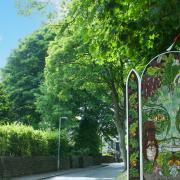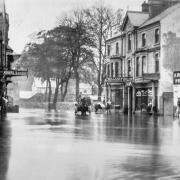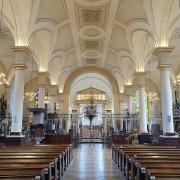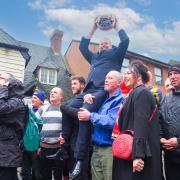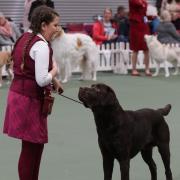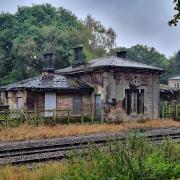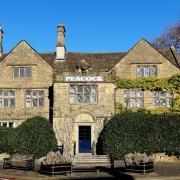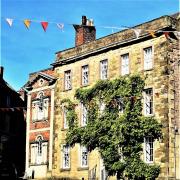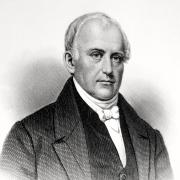Beating the Bounds is an ancient tradition formerly practised in an era before cartographers - and more recently GPS devices, satnavs and Google Maps - mapped everything out for us with precision.
It involves an annual perambulation of the parish boundary in order to instil in younger generations where the outer edges of their local parish lay, ensure there had been no encroachment by neighbouring parishes, and seek celestial protection for the area for the forthcoming year.
Boundary encroachment was a serious issue, as which parish you lived in affected to whom you paid your taxes. There was also the matter of local identity and pride.
Messing with boundary locations can still enflame passions, as seen in 1974 when changes as a result of the Local Government Act 1972 saw several places switch counties at the stroke of a bureaucrat’s pen – a local example being Tintwistle, which found itself in Derbyshire, having been classed as Cheshire up to that point.
Often the boundaries would be delineated by landmarks like boundary stones. Many, if they have survived, now languish obscurely in fields - although one whose heritage is highlighted can be found on The Dale in Hathersage, where a sandstone boulder set into a dry stone wall bears a plaque reading ‘The old Gospel Stone once used at Rogationtide’.
Clarence Daniel in Derbyshire Customs records the stone was nearly destroyed by the workmen building the wall, but was preserved thanks to the intervention of the then vicar of Hathersage, Reverend J. H. Brooksbank.
The Rogationtide to which the plaque refers is a feature of the church calendar believed to have been observed in Britain since the 7th Century, and usually involved periods of fasting and the blessing of growing crops by a priest during a walking procession.

At significant points on the walk the priest would read extracts from The Gospels - hence The Gospel Stone at Hathersage.
The traditional date to conduct a bound-beating exercise is governed by when Easter falls, and usually took place on Ascension Day (the fifth Thursday after Easter), also known as Holy Thursday - which this year falls on May 18.
The notebook of Titus Wheatcroft, parish clerk of Ashover, contains the following made in 1722 and addressed to his successors:
‘I now come to show you by marks how large the parish is in its outermost bounds; which marks are usually viewed by the inhabitants on the day called Holy Thursday. On the Sunday before, notice is given in the church that the boundaries will be viewed on Thursday next, prayers usually beginning on the same morning at seven o'clock, where they meet, some come on horseback and others on foot to view these marks following. This is called the yearly perambulation, and is observed in Rogation week.’
In 2016 I joined a walk organised by All Saints parish church at Bakewell, who have been conducting their own revived bound-beating walk since the mid-2000s.
All Saints is part of a combined benefice encompassing the churches of Ashford-in-the-Water, Sheldon, Rowsley and Over Haddon. In previous years, Beating the Bounds participants have begun walking from Bakewell and through the surrounding countryside to one of the other parishes.
In one year they met with neighbouring parishioners at Ashford, and in 2009 they walked along the Wye Valley to Rowsley.
One gentleman present told me: ‘one year we tried to do all of them, apart from Rowsley as that was too far, but ended up really wet and miserable out in the fields all day’.
The year 2016 was a little different, as the group was keeping to the streets of the town, stopping to give relevant prayers of thanks at locations that underpin the day-to-day existence of Bakewell – including allotments, the market, shops, and Lady Manners school - with the underlying message of ‘looking after the neighbourhood’.

After a quick briefing and explanation of what Beating of the Bounds entailed, we set off - 14 people, one dog, and one vicar, The Reverend Canon Tony Kaunhoven.
Despite having grown up seven miles away at South Darley, thanks to the Bound-Beating exercise I saw plenty of nooks and crannies of Bakewell with which I wasn’t previously familiar.
At Holymoorside and Walton, the custom was instigated by local councillor Martin Thacker, in 2009. Here the survey is conducted in late July or early August for the practical reason that Mr Thacker was formerly headteacher of a local primary school and arranged it during the summer holidays.
The walk visits eight inscribed boundary stones erected in 2000 to commemorate the Millennium, the first is to be found at the starting point, Holymoorside Village Hall car park.
This walk offered the opportunity to explore the footpaths of some lesser-known North East Derbyshire countryside, a few miles outside the familiar paths of the Peak District.
The local landscape was scorched yellow as a result of an ongoing heatwave. A few ominous rumbles of thunder as the group met at the village hall and a downpour prior to setting off soon gave way to blazing sunshine, and after I had to bow out at the Stone Edge boundary stone, the remaining part of the route was partially completed by car for health and safety reasons owing to the heat.
Near Stubbing Court, the walkers were met by a support team who had brought pre-ordered cobs and a camping stove and a whistling kettle.
This was a far cry from historic bound-beating walks, where children could be forcibly bumped on boundary stones, made to crawl through hedges or thrown into rivers as a way of memorably drilling into them where the boundary points lay.
A historic reference in the Derbyshire Archaeological Journal of 1921 records that at Baslow and Beeley children in the 1810s were given gingerbread at each marker – a more civilised way of instilling the locations into young minds.
Another parish which leant towards the 'carrot' methodology as opposed to the ‘stick’ was St Peters in Derby, where at their bound-beating walk in 1844 participants consumed 200 buns, washed down with 76 gallons of ale.

This custom is not unique to Derbyshire, with notable examples still occurring on Ascension Thursday in Oxford and at the Tower of London, with long wooden wands employed at both to strike against boundary markers.
It has been speculated some of England’s strange customs whose origins are lost in the mists of time are ritual hangovers from bound-beating exercises, such as the Abbot’s Bromley Horn Dance over the Derbyshire border into Staffordshire and consists of costumed dancers perambulating the village carrying ancient reindeer antlers which have been carbon dated to the 11th Century.
Castleton’s Garland Ceremony also incorporates a bound-beating element when the King and his consort ride around the village boundaries on horseback prior to the King donning the hooped floral garland which obscures him for the rest of the ceremony until it is removed and hoisted up onto the pinnacles of the church tower.
The tradition is alive and well in 2023: Belper’s Fleet Folkloric Forum held an early bound-beating walk to celebrate the coming of spring on March 19, while a Beating the Bounds walk organised by Elvaston Parish Council took place on April 30.
There may be more local examples. If you come across any, I heartily recommend participating as a unique way of experiencing your patch, combined with an opportunity for exercise, socialising and upholding an ancient tradition.
If there aren’t any such walks on your doorstep – why not research your local parish boundaries and set one up?








